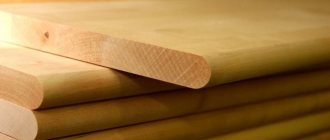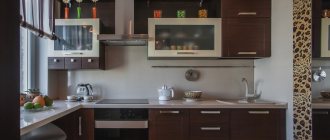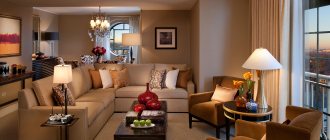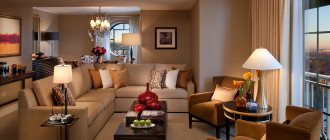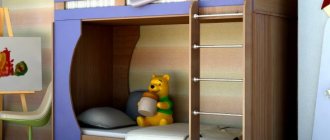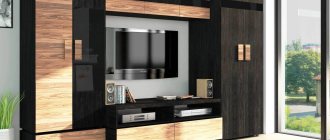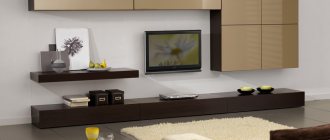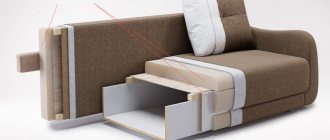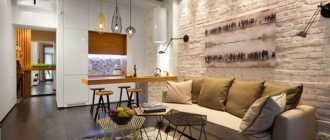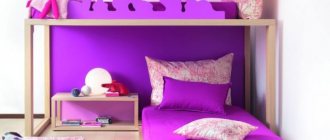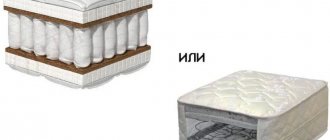Exquisite and unique, luxurious and intricate, carved furniture made from natural wood has at all times been a sign of impeccable taste and respectability. Being true works of carpentry, such items fill the interior with a special aura of serene calm and cozy nobility.
Carved furniture in the interior
Advantages and disadvantages of carved furniture
Carved furniture is the personification of timeless classics. It will never go out of fashion, always attractive and relevant.
The reasons for this demand are explained by a whole list of advantages:
- Versatility. Carved furniture is appropriate in any room, be it a small apartment or a spacious country house.
- Sophistication and respectability. Such items add a touch of noble elegance to the interior, demonstrating taste and emphasizing the status of the owner.
- Wide selection of carving techniques and styles.
- Possibility of purchasing original work or making items according to your own design.
If we are talking about carved furniture made of natural wood, you should definitely add to the above advantages:
- exclusivity;
- environmental safety;
- hypoallergenic;
- strength and durability.
The disadvantages include:
- Significant cost. For exclusive furniture and sometimes the price tag is “impressive”...
- Significant weight. It is worth considering the fact that large-sized carved furniture (wardrobe, sofa) weighs significantly more than “budget” options based on fiberboard, chipboard, MDF.
Preparation for the manufacture of plywood furniture
You can start making furniture from plywood after you have acquired all the necessary tools and materials. During the work you will need the following:
- Plywood sheets. The thickness of the plywood sheets used depends on the upcoming load on the part and its purpose. To make a durable frame and shelves, 18 mm thick material is used. For a façade, a thickness of no more than 12 mm is sufficient. The doors of wall cabinets, which are fixed using stiffening ribs, can be made of plywood 6 mm thick.
- Fasteners To ensure reliable and effective fastening of individual structural parts to each other, special fasteners are used - visible and hidden. Screws are used to fasten individual parts. Using glue or silicone sealant, you can additionally secure individual structural elements.
- An important element of furniture is fittings, which are used to ensure the functionality of the structure and form its decorative appearance. These include: handles, canopies, closers, wheels, limiters.
- Materials for decorative finishing: varnish, stain, film, putty.
- Tools you will need: jigsaw, measuring tools (tape measure, square), clamp and cross clamp, sandpaper, screwdriver.
Tools
Types of thread
In modern furniture production, two types of wood carving are used:
- Sculptural (volumetric). The most difficult and, accordingly, expensive. The end result is a three-dimensional figure, carefully worked out from all sides.
- Embossed. It is a drawing protruding above the background, or, conversely, drawn along it.
Relief carving, in turn, is divided into several technical options:
- Welted (openwork). It involves creating thematic images by completely removing (cutting out) the initial background.
- Deaf. Assumes the presence of an untouched (blank) background.
- Invoice. It is an openwork carving fixed on a plane.
- Flat-relief. It is distinguished by a voluminous ornament with a uniform deepening of the background surface.
- Geometric (high relief). Based on the reproduction of elements of a certain geometric shape. The motifs of the patterns are as close as possible to natural ones.
By combining several types of carvings in the manufacture of furniture, you can get exclusive models worthy of being called works of art.
Chest of drawers made of plywood, stylized as antique furniture
Vovan mens
My wife asked me to make a new chest of drawers out of plywood. She's tired of the old one, which is already twenty years old. After discussing the size and appearance of the furniture with my wife, I went to a construction hypermarket, where I bought:
- twenty linear meters of timber with a cross section of 2-4.5 cm;
- four linear meters of bars with a cross section of 4x4 cm;
- decorative elements for the front of the chest of drawers;
- drawer guides;
- 1 liter of PVA glue;
- handles and hinges;
- plywood 4, 6 and 10 mm thick.
Oil and wax for finishing wooden furniture were left over from old stock.
Drawing of a homemade chest of drawers.
The technology for making a stylish chest of drawers from plywood is clear from the pictures below.
Assembling the furniture frame.
Covering the frame with plywood.
Installation of furniture facades.
Installation of dresser drawers.
Finished chest of drawers without paint finishing.
The decor was applied to the walls using the decoupage method, through a stencil, using ordinary wood putty.
The user found the design for the stencils on the Internet and then cut it on a plotter.
Close-up details of the chest of drawers.
Close-up of a chest of drawers made of plywood.
The finished product after applying oils and wax.
The cost of making a chest of drawers is 10 thousand rubles.
In addition to the chest of drawers, the user made a box for storing jewelry in a similar style.
Close-up of the box.
Box from the inside.
Artistic carving styles
Being a unique indicator of the taste and material well-being of the owner, carved furniture fits perfectly into many interior design styles.
It adds strict grandeur to rooms in the classical style, fills Baroque, Rococo and Empire interiors with sophisticated luxury, sets the mood for rooms in the Art Nouveau style, emphasizes the cozy harmony of rustic design and the mysterious charm of ethnic interiors.
To demonstrate all the multifaceted beauty of carving, furniture for each type of interior design is made in accordance with a specific artistic style. The most common ones include:
- Empire style This direction of carved art is covered with a light touch of antiquity. The key motifs in it are lyres and laurel branches. The hallmark of the style is massive furniture with original legs made in the form of paws or animal figures, including mythical ones.
- Baroque. It is distinguished by an abundance of complex plant and fantasy motifs, a harmonious combination of sculptural and relief carvings. Straight lines and flat elements are absent, giving way to intricate curls.
- Gothic. Furniture in this style is distinguished by majestic massiveness, upward direction and church motifs. For decoration, openwork ribbon weaving, foliage patterns and heraldic symbols are used.
- Classicism. It manifests itself in strict elegance. The carving has a pronounced geometric nature, with a predominance of simple shapes and straight lines.
- Modern. It attracts attention with its intricate, curved contours and whimsical outlines. Each carved detail looks unusual and resembles a climbing plant.
- Rococo. This style can be called a sophisticated form of baroque. Such furniture has slightly smaller dimensions, and the carving on it looks more elegant. Recognizable features of Rococo are the curved cabriole leg and rich floral patterns.
- Ethnic styles. The main distinguishing feature of such carvings is the use of traditional symbols and geometric patterns for a particular culture.
Rules for working with plywood
When working with this material, certain requirements are taken into account:
- thin sheets are cut with a sharpened knife, medium ones with a hand jigsaw, and sheets with significant thickness are cut with an electric jigsaw;
- do not connect sheets with nails or screws until holes for fasteners are created in advance;
- the material is not cut across the fibers;
- Before gluing the elements, they must be cleaned.
Thus, by strictly following the instructions and certain rules, the production of truly high-quality and reliable plywood furniture is ensured. It can have different sizes, shapes, colors and other parameters.
Materials used and their features
Most often, the following types of wood are used for the production of carved furniture:
- Linden. The most convenient material to process, suitable for complex and intricate patterns. It tolerates high humidity well, but does not stain well. Mainly used for making small items and decorative items.
- Pine. One of the most common types of wood raw materials, which makes it possible to produce beautiful and affordable furniture. It is characterized by resistance to rotting and humidity fluctuations.
- Birch. Solid birch has sufficient density and is resistant to mechanical stress, while it lends itself well to cutting and painting. Used mainly in the production of applied carved elements.
- Pear. Solid pear is practically not subject to cracking and does not lose its shape. It is a heavy and hard wood. It is used for both relief and sculptural carving. It is easily sanded and polished, and with the help of appropriate tinting it perfectly imitates mahogany and ebony.
- Nut. It is quite easy to process, easy to polish, and has moderate resistance to moisture. The main advantage of this material is the ability to obtain original color transitions. It has proven itself to be excellent when performing volumetric and relief carvings.
- Alder. Moisture-resistant, light and durable wood. It lends itself quite well to processing, painting and polishing. It has an amazingly beautiful texture that allows you to create high-quality imitations of valuable wood species.
- Oak. It has high levels of hardness, strength and moisture resistance. A sought-after, durable, but expensive material. Suitable for both creating solid, massive pieces of furniture and small carved decor.
- Beech. Products made from it are not inferior in strength to oak, but are easier to process and paint. And the absence of chips during operation makes it possible to create more sophisticated patterns.
- Ash. In terms of strength, it competes with oak wood, adding to this a decorative texture. Used to create complex parts.
In addition to the above, elite types of wood are also used. These are mahogany, ebony, acacia, black walnut and Karelian birch. They have special qualities and are used exclusively for the manufacture of exclusive designer furniture.
Budget solution
In the event of an unfortunate discrepancy between financial capabilities and the desire to decorate your home with carved furniture, a budget option for solving the problem comes to the rescue. Wardrobes and sideboards, sofas and armchairs, cabinets and tables do not necessarily have to be made of solid expensive wood. You can purchase overlay decor and decorate existing furniture with it.
We create with our own hands
For many, the issue of saving money is paramount. Therefore, making the necessary product yourself will help significantly save on assembly.
- Having decided to make a plywood “masterpiece” with your own hands, you should decide on your needs in order to ultimately get the intended design.
- If it must be a durable and reliable item in operation, then you should carefully familiarize yourself with the assortment of construction-grade plywood, which is produced precisely for these purposes.
- If you plan to change the design, then when choosing, you need to focus on the decorative class.
In addition, it is not superfluous to know that there is a distribution by variety, which is graded in descending order of the main indicator, namely, resistance to moisture.
Carved furniture in the interior of rooms
Graceful lines, thoughtful proportions and harmonious decor - all this makes carved furniture an object of attention, no matter in which room it is located.
Living room. Ideal for arranging carved furniture. Unusual coffee tables are appropriate here, as well as soft sofas and armchairs with appropriate decorative elements.
Bedroom. This is a room into which a bed with a spectacular headboard will fit organically. A worthy place here will be occupied by a carved chest of drawers, an armchair, complemented by appropriate decor on the cabinet and an elegant dressing table.
Cabinet. To demonstrate solidity and luxury, carved cabinets, armchairs and, of course, a desk can be included in its furnishings.
Dining room and kitchen. Here, a very impressive decoration will be: tables, figured buffets, openwork shelves, decorative facades, stylish chairs and corners.
Children's room. In this room, carved objects are no less relevant than in the others. Simple but beautiful shaped elements can decorate a crib, chest of drawers, linen closet, shelves, table and chairs.
Hallway. An object of attention and a way to demonstrate style in this room can be: a carved hanger, a wardrobe for outerwear, a dressing table and a shoe stand.
An important nuance that you should pay close attention to when arranging carved furniture is that all items correspond to the chosen interior design style.
How to care
It’s not easy to keep a kitchen like this clean. This requires not only special knowledge, but also a lot of time and effort.
First you need to determine what cleaning liquid you can use if water and a rag are ineffective: to do this, you need to wipe a small piece of wood in an inconspicuous corner, let the surface dry and watch the reaction. But you should use chemicals only in exceptional cases, for example, to clean greasy stains on spice racks.
It is very important to wipe all surfaces with a damp cloth as often as possible, you should not allow dust to penetrate into the pores of the wood, as this will make it lose its decorative appearance, but in order to clean carved surfaces, it takes time and patience, so sometimes you can use soft dust brushes.
Lacquered facades must be wiped with a special product to keep the surfaces shiny. The tabletop requires special care. You can’t put hot things on it, spilled liquids should be cleaned up immediately, and you shouldn’t leave food on the surface, the smell of which could be absorbed by the wood.
